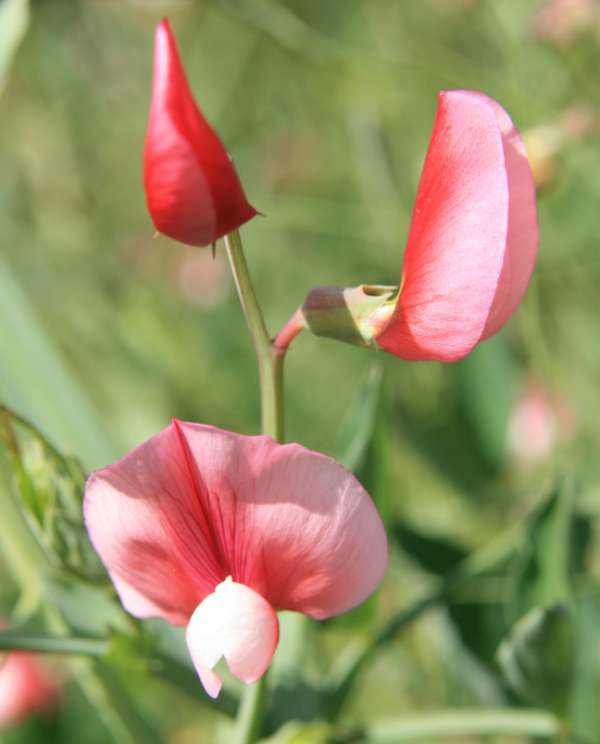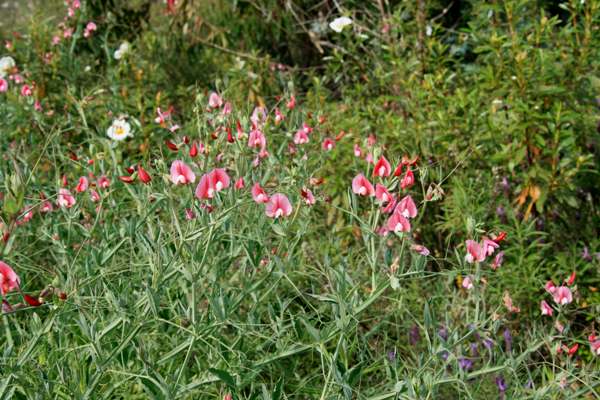Trees Birds Mammals Fish Amphibians Reptiles
Wild Algarve
Bookshop
Lathyrus latifolius - Broad-leaved Everlasting Pea
Phylum: Magnoliophyta - Class: Equisetopsida - Order: Fabales - Family: Fabaceae

The common name of this species is sometimes written Broad-leaved Everlasting-pea.

Description
Climbing with the assistance of its curling tendrils, Broad-leaved Everlasting Pea can reach a height of 3 metres. This is one of the most conspicuous and colourful members of the Pea Family (Fabaceae), of which there are so many in Britain and Europe, and particularly in the Mediterranean region. It is a very variable plant and the purple, red, pink of white flowers can appear in many different shades. The flowers occur inlongated clusters of 4 to 10 heads, along the upper parts of hairless, winged stems. The buds are pendent but spread as the flowers open.
The paired leaves of Lathyrus latifolius, are ovate and hairless, paired. The individual leaflets are up to 15 cm long and 4 cm across. They have prominent veins.
Flowering Times
Broad-lreaved Everlasting Pea blooms from April to August. In Britain ans Ireland the peak display period is usually late May to mid July.

Broad-leaved Everlasting Pea is cultivated in the Mediterranean, and so in some instances may have escaped and become naturalised.

Distribution
This plant, a native of Southern Europer, has becomenaturalised in Britain and and Ireland. Having originally been introduced as a garden plant it has escaped into the wild and seems to be particularly fond of roadside verges, hedgerows and roundabouts.
Habitat
Broad-leaved Everlasting Pea scrambles over almost any kind of plant it can find, and so look out for it on woodland edges, scrubby wasteland and of course hedgerows. in Britain and Ireland this introduced flower is most commonly seen in coastal areas.

The specimens shown on this page were photographed in the Algarve, Portugal, in May, and at RSPB Conwy in North Wales in late June and early July.
Etymology
The specific epithet latifolius comes from Latin and simpoly means 'broad-leaved'.
Similar species
Narrow-leaved Everlasting Pea Lathyrus sylvestris is similar but, as the common name suggests, it has much narrower leaves.
Sue Parker's latest ebook is a revised and enlarged edition of Wild Orchids in The Burren. Full details here...
Buy it for just £5.95 on Amazon...
Sue Parker's new ebook is a comprehensive and fully revised edition of her acclaimed field guide to the Wild Orchids of Wales. Full details here...
Buy it for just £5.95 on Amazon...
Please Help Us: If you have found this information interesting and useful, please consider helping to keep First Nature online by making a small donation towards the web hosting and internet costs.
Any donations over and above the essential running costs will help support the conservation work of Plantlife, the Rivers Trust and charitable botanic gardens - as do author royalties and publisher proceeds from books by Pat and Sue.